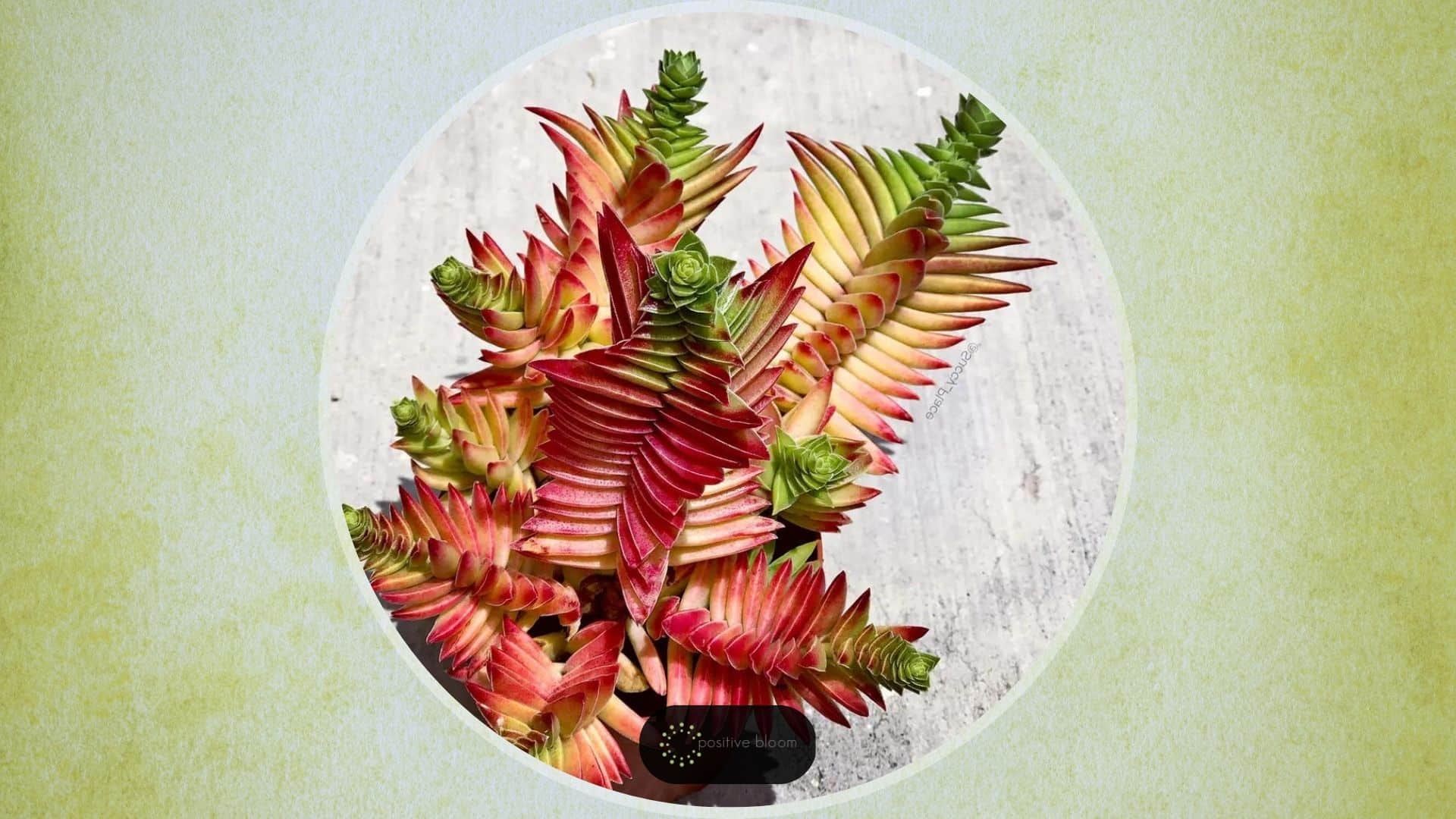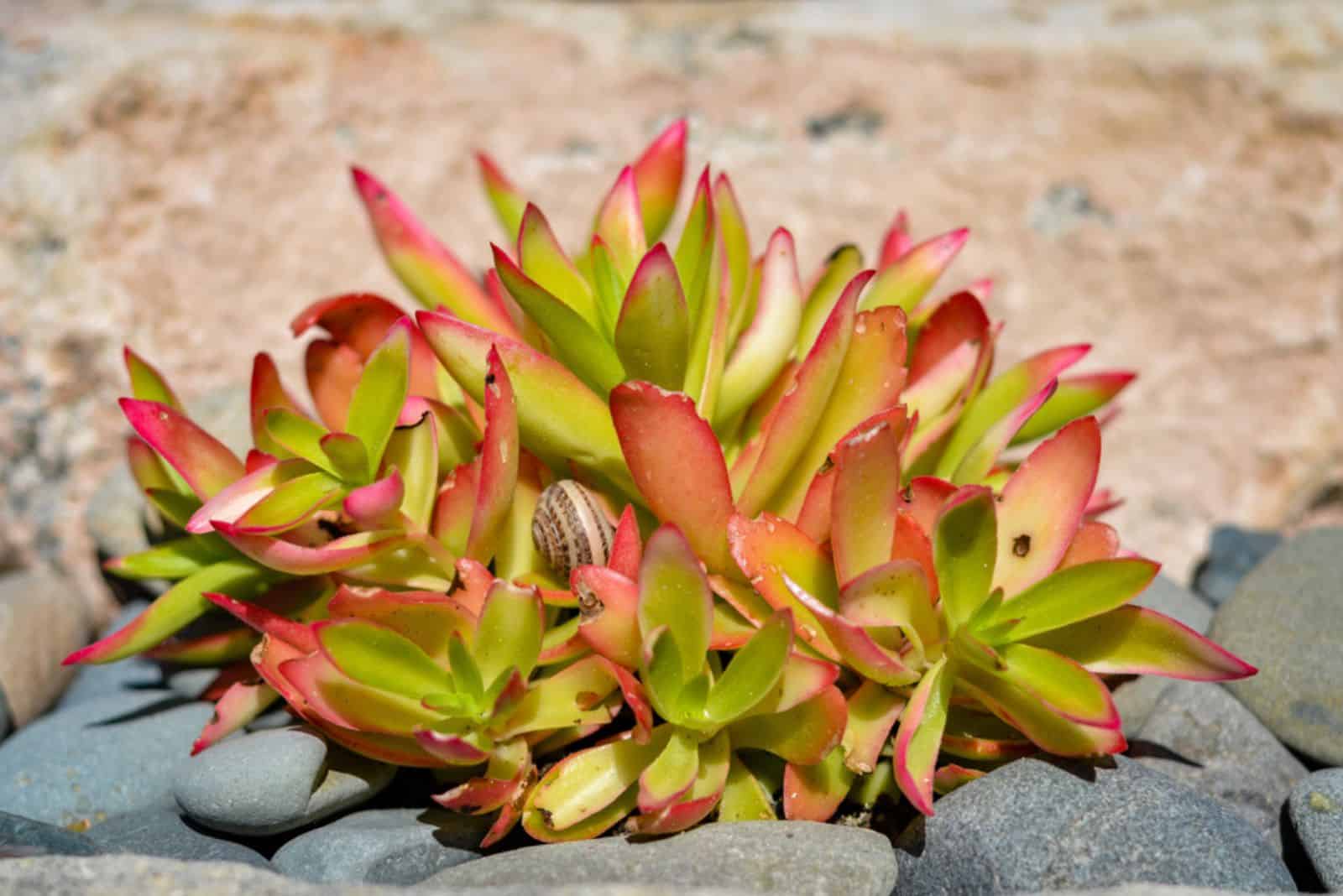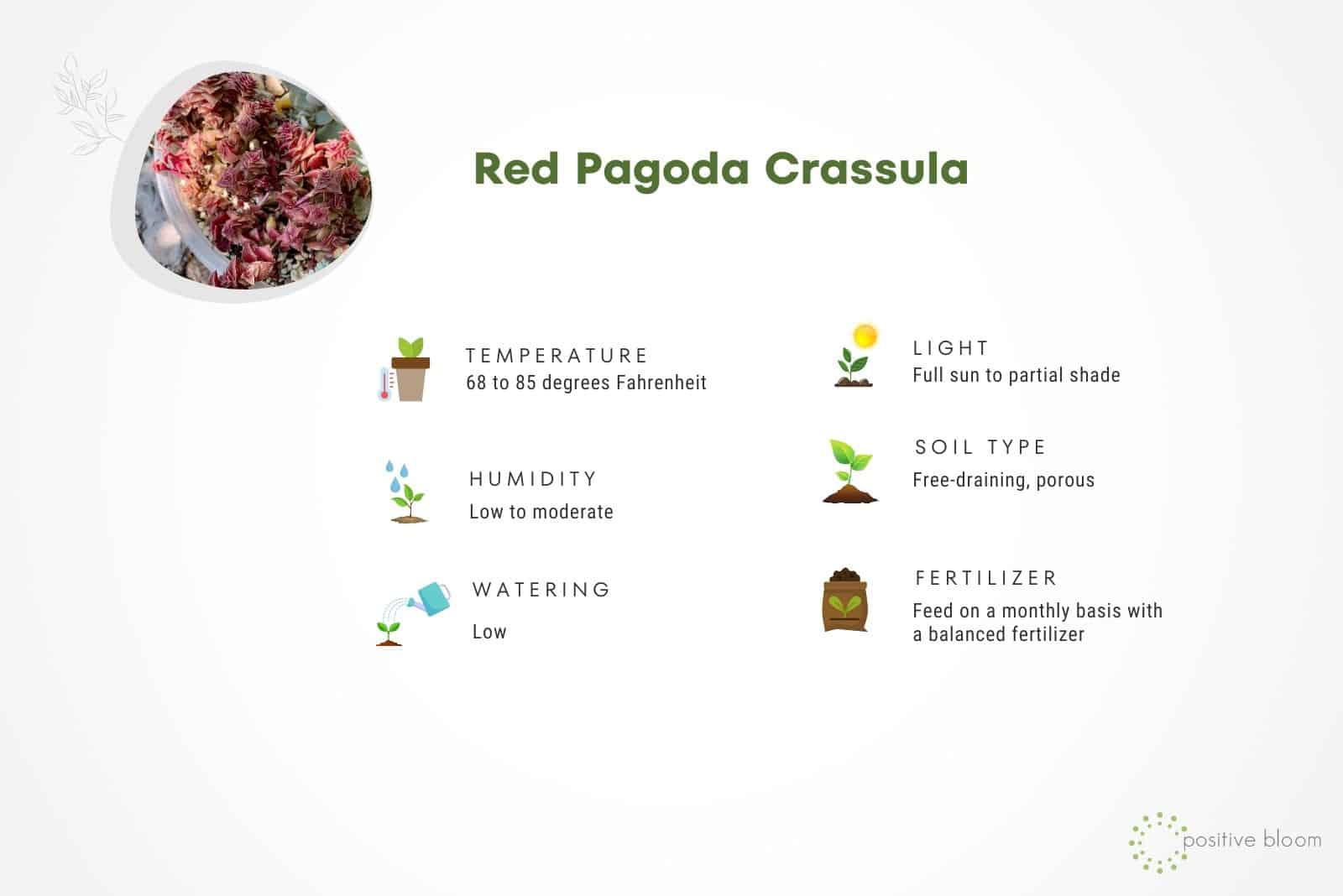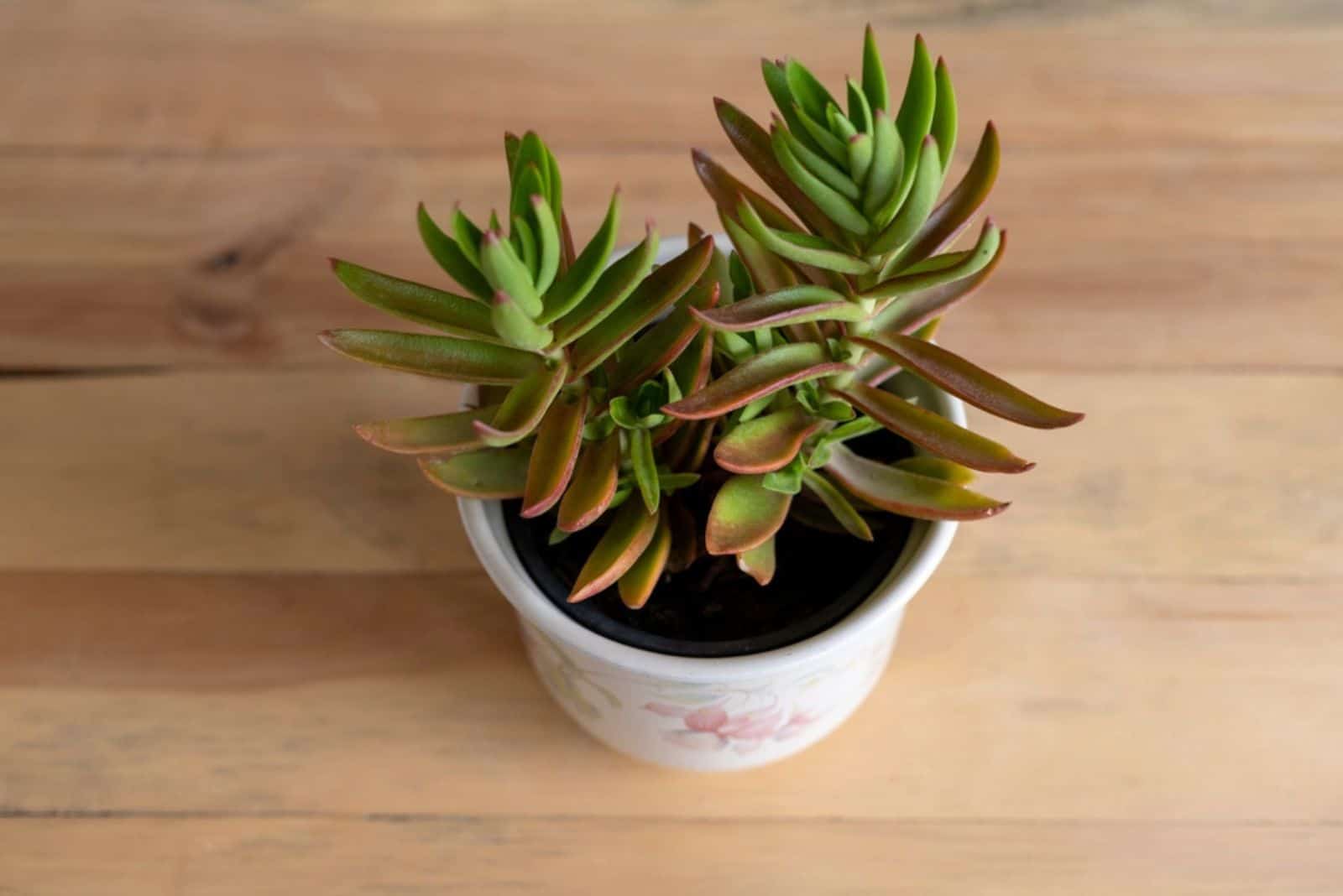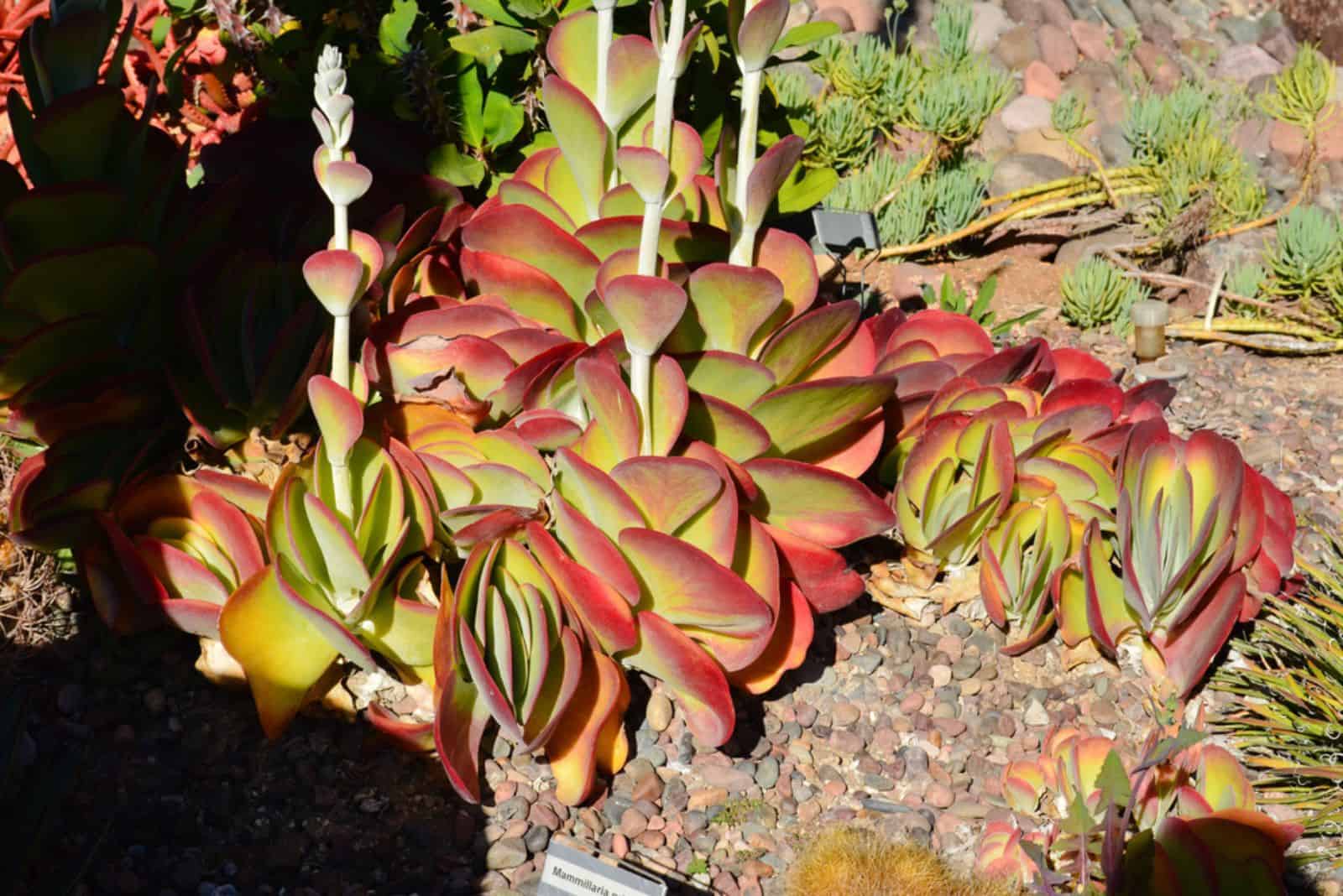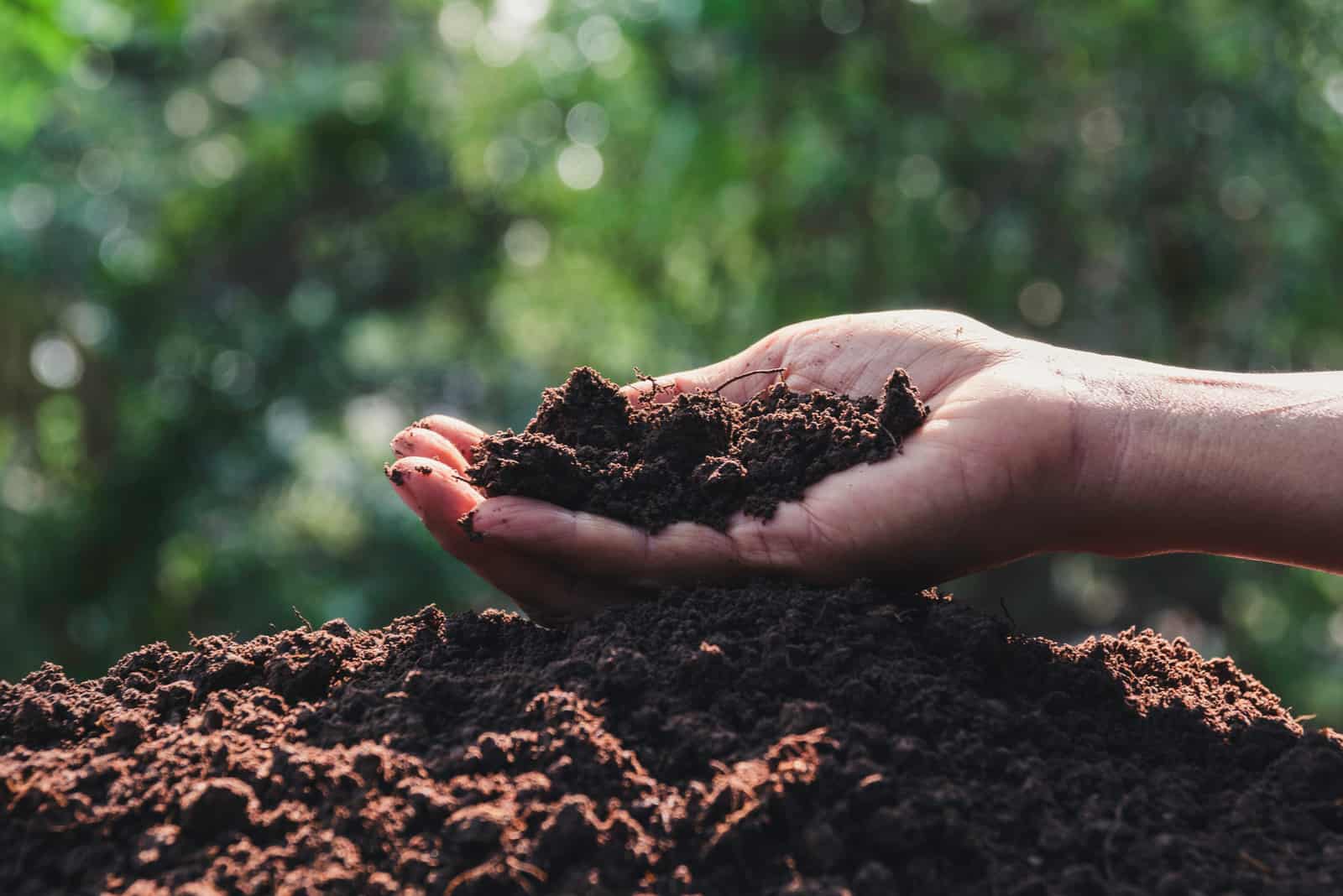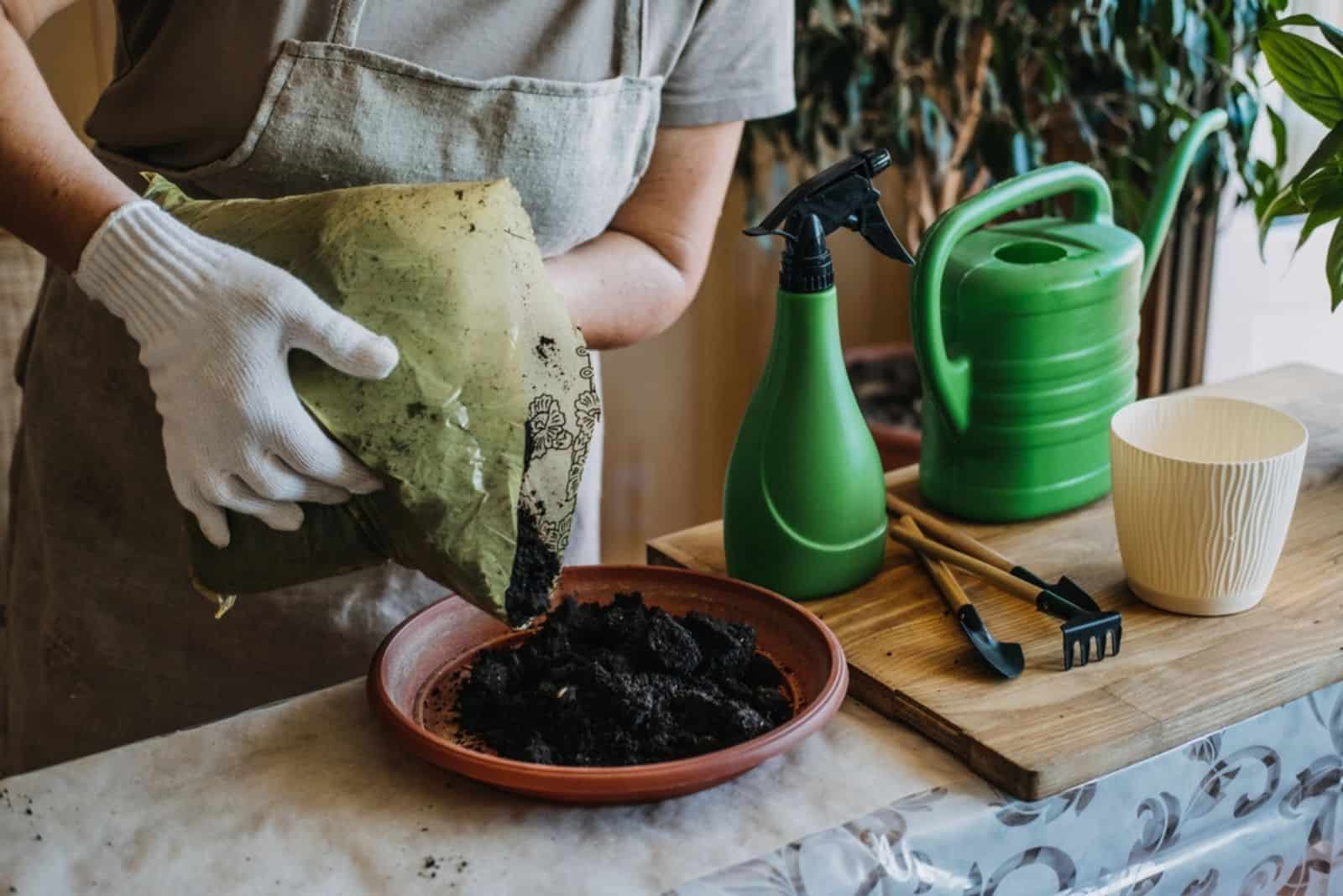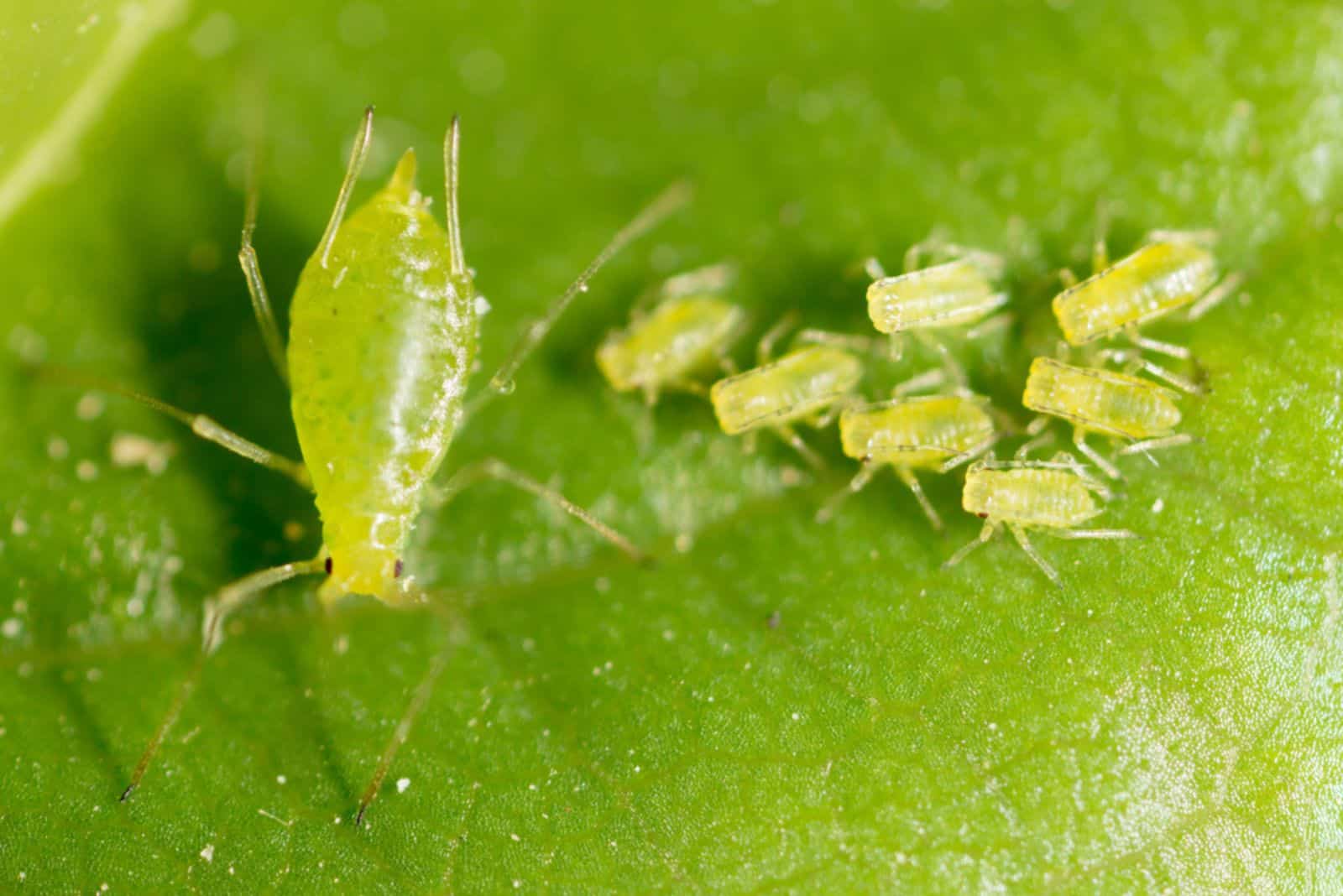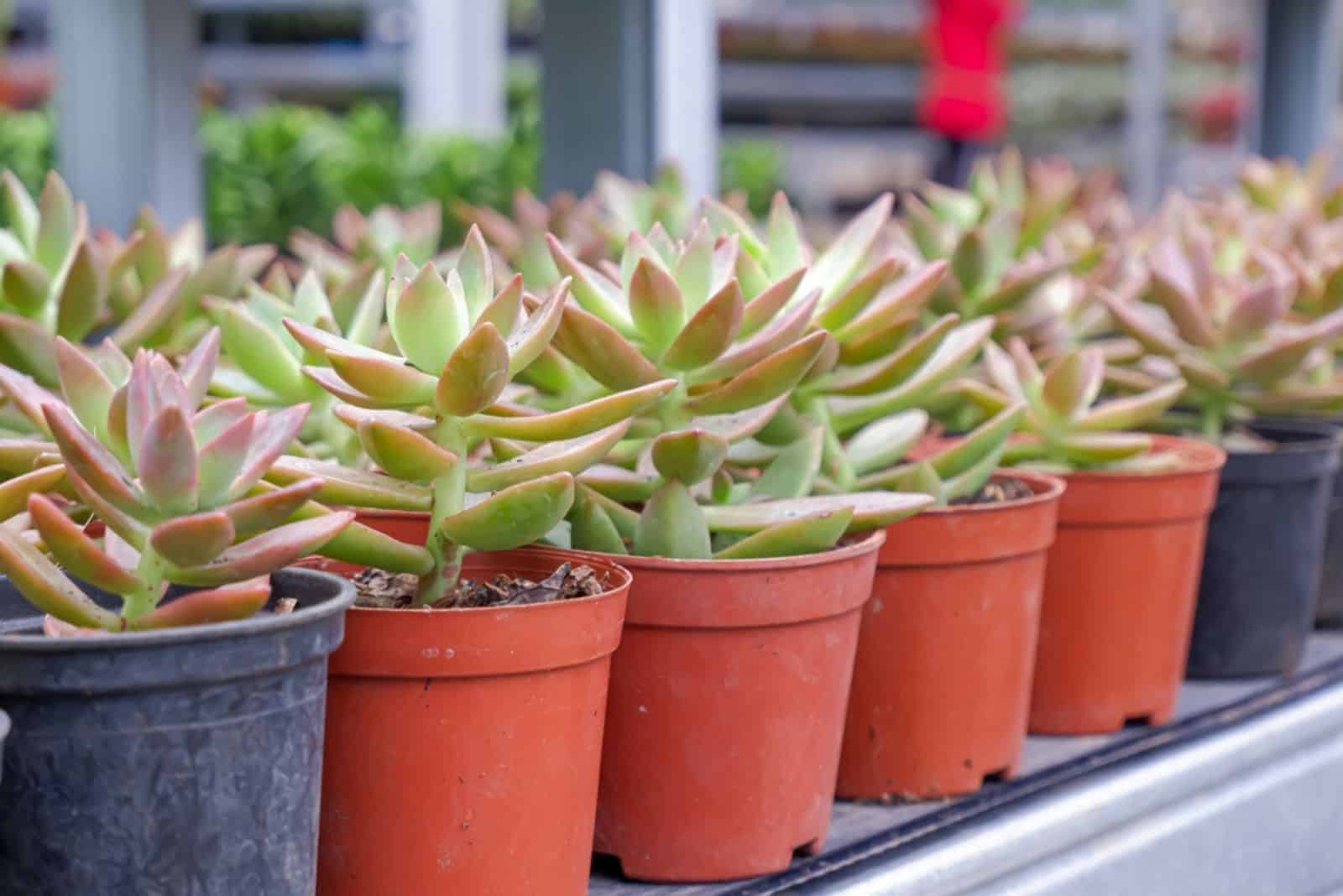It’s not a secret that succulents are the easiest houseplants to maintain, but there are so many of them that we often can’t decide which one to purchase next.
Well, you are in the right place if you are looking for a new species!
No matter if you are a beginner or you already have a plant collection, I’m sure you’re gonna like the plant I’ll show you today.
Meet the Red pagoda, one of the most impressive succulent species in the world. The plant has it all; it looks breathtaking, it’s really hard to kill, and it isn’t susceptible to diseases.
In this article, you’ll see a detailed description of the Red pagoda’s appearance, its care requirements, propagation methods, and some common issues you may have to face.
Let’s start with some basic information about this Crassula plant:
[table id=639 /]
Let’s get started!
What Is The Red Pagoda?
The Crassulaceae (stonecrop) family encompasses a wide variety of species. As far as the genus Crassula is concerned, ovata species, commonly known as Jade plants, are the most popular.
The Red pagoda is one of the most beautiful plant species with red foliage. The leaves are triangular in shape and their scarlet margins attract plant collectors worldwide.
When you look at the plant from a distance, it’s hard to believe that it was not painted and shaped by an artist.
Once the rosette gets older, you’ll notice a new one growing on top of it. This growth habit continues until your plant reaches maturity.
This Crassula is commonly seen in rock gardens, and growers in warmer climates use it as a groundcover. You can frequently see it growing together with its closest cousin, the Campfire succulent.
If you live in a colder climate, you should keep your Red pagoda in a container.
How To Care For The Red Pagoda Crassula
Growing conditions for the Red pagoda crassula should mimic those found in the plant’s natural environment.
Light Requirements
The Red pagoda is a sun-loving plant and no matter if you keep it indoors or outdoors, you’ll need to provide a lot of bright light.
If you grow this beautiful succulent outdoors, you should find a spot that receives enough bright light. Alternatively, choose a partially shaded spot, but make sure it receives morning sun.
When cultivated indoors, Red pagoda plants (from my experience) thrive in south-facing windows.
The Red pagoda will benefit from some shade during hot summer days.
Interestingly, when succulents are given plenty of light, their red color becomes darker and they look even more beautiful.
Artificial lights can help ensure good lighting conditions for your Red pagoda succulent, but try to ensure as much natural light as possible.
Low light typically causes succulent species to become etiolated.
How Often To Water The Red Pagoda
Just like all its succulent cousins, this Crassula can store some water in its foliage due to specialized cells.
If you don’t irrigate your plant for a while, it uses the stored water. It’s a kind of defense mechanism these plant species have in order to survive drought in their natural environment.
When it comes to the Red pagoda plant, it’s better to postpone watering than risk root rot.
Never irrigate this plant if the soil feels wet to the touch. If the growing medium is still wet below the surface, wait a little longer.
‘Dehydration’ has a similar effect as direct light in the Red pagoda plant; the color red will be darker if the plant lacks water.
Of course, this doesn’t mean you should stop irrigating your plant just to encourage it to change color. You would only end up with a pale and wilting plant if it’s severely dehydrated.
If excess water accumulates in Red pagoda soil, it will most likely develop root rot, which may have fatal consequences.
The Red pagoda crassula will need more water when temperatures are excessively high, and less water during hibernation (winter months).
Temperature And Humidity Requirements
The ideal temperature range for Red pagoda succulents is from 68 to 85 degrees Fahrenheit. These plants may tolerate many growing conditions, but the one thing they won’t put up with is frost.
As long as temperatures are higher than 50 degrees Fahrenheit, your lovely pagoda plant will be healthy. Although many growers claim that their Red pagoda plants have survived temperatures slightly lower than 40 degrees, I advise you don’t test this theory.
One tricky thing about incorrect temperatures is that they significantly affect the watering needs of Crassula capitella plants.
The higher the temperature, the more water your capitella plant needs. When temperatures are too low, water takes a lot of time to evaporate, so the plant could get root rot disease quickly.
Places near heating vents, air conditioners, fireplaces, and drafty windows should be avoided. Sudden temperature changes and cold drafts can cause severe issues for your Red pagoda.
Humidity
These Crassulas aren’t fussy when it comes to humidity levels. The golden rule for these plants when it comes to humidity is that nothing less than 30% and nothing more than 50% will do.
This means the Red pagoda is a perfect plant for every household since humidity is typically around 30%.
As long as you are comfortable with humidity levels, your green buddy will be too.
Soil For The Red Pagoda Houseplant
There are a few parameters you must follow in order to get the best potting soil mix.
To begin with, the growing substrate should be free-draining to discourage fungal growth that leads to root rot.
The potting blend should also be loose to promote airflow in the soil and an appropriate oxygen supply to the Red pagoda roots.
The good thing is that every plant store sells a succulent/cactus soil mix, which is probably the best option if you are a beginner plant grower.
If you want to try making your own mix, go with 3 parts potting soil, 2 parts sand, and 1 part perlite. You’ll avoid many issues by using these materials in the soil for your Red pagoda crassula plant.
Fertilizing Schedule
Your Red pagoda will be happy even with a bit of neglect. The fertilizing needs only confirm this.
This succulent won’t punish you if you don’t feed it regularly. It’ll benefit from monthly feeding during the growing season; use balanced fertilizer and dilute it before application.
Remember that your pagoda is sleeping during the winter months (hibernation), so there’s no need to feed it at all.
Repotting
The pagoda species have a pretty slow growth rate, so you don’t need to repot them often. Once you notice your Crassula has overgrown its pot, you can transfer it to a larger one.
As well as a slightly larger pot, you should prepare fresh soil because the old one may no longer have the nutrients that the pagoda plant requires. Utilizing a new growing substrate will also help you avoid contamination.
Take your pagoda out of its pot carefully and expose the root system by removing the surrounding soil.
See if any roots are damaged; if so, remove them with clean and sharp scissors/pruners.
Put the growing substrate into a new container and put your pagoda in the center. Add more substrate until you can no longer see the roots, and then irrigate the plant well.
Plants typically go through shock after repotting, but you can mitigate this by giving your pagoda a lot of morning sunlight.
How To Propagate The Red Pagoda Succulent
I have tried both stem and leaf-cutting propagation techniques with my pagoda, and both worked perfectly.
Here are the steps:
1. Take a sharp pair of scissors and dip them in a sanitizing solution (bleach or alcohol).
2. Cut off a healthy Red pagoda stem/leaf, and leave them for a couple of days to callus over.
3. Put the cutting in a soilless growing substrate.
4. Find a well-lit spot for the Red pagoda cutting.
Root formation takes about a month; during this period, irrigate only when the growing medium is entirely dry. When you notice the cutting has developed roots, you can transfer the rooted Red pagoda cutting to a new container.
Common Issues With The Pagoda Red Plant
The pagoda plant is relatively problem-free. Most issues are caused by inadequate Red pagoda plant care.
Let’s see what that means!
Pests And Diseases
I wish I could tell you that you won’t see any pests on your pagoda plant, but aphids, vine weevils, and mealybugs seem to love these Crassula plants as much as we do.
When you are watering your plant or performing any other activity regarding plant care, inspect the plant for pests. If you notice a cottony substance on the undersides of the Red pagoda leaves, you might be dealing with mealybugs.
Vine weevils are probably the biggest fans of pagoda species. These tiny brown beetles burrow into foliage and stems, which typically results in rectangular holes.
The worst thing is that the larvae of these insects feed on pagoda plants and may cause severe damage to the root system.
Aphids leave a big mess after feeding on pagoda plants. Yellowing and curling frequently occur after these creatures finish their dinner.
Use neem oil if you notice pests on your precious pagoda plant. Please don’t use pesticides unless the infestation is severe and life-threatening!
Diseases
Luckily, pagoda plants aren’t susceptible to lethal diseases. But….(there’s always a BUT), there’s one disease no plant species is resistant to – root rot.
If you are an experienced plant grower, I’m sure the previous sentence made your hair stand on end.
I described the watering needs of the pagoda plant earlier, and if you don’t follow them, you might end up with root rot in your plant!
The only solution to root rot is to repot the affected plant ASAP. This disease spreads rapidly, so there’s no time to waste; remove the rotten roots, apply fungicide, and put your pagoda in fresh soil.
Discoloration And Deformation
Here are the most common problems with pagoda plants related to inadequate care:
1. Shriveling leaves: The most common cause of shriveling leaves in pagoda species is underwatering. Even though the plant is drought tolerant, it needs water for healthy development.
2. Yellow leaves: If pagoda leaves turn yellow, check the soil moisture; if the surface of the soil is wet, inspect the root system immediately.
3. Brown leaves: Browning may occur as a result of high humidity, overwatering, and too much direct light. Check humidity, soil moisture, and sun exposure. Follow the tips above to fix the problem.
FAQs
Is the Red pagoda toxic?
Yes, the Red pagoda (Crassula capitella) is a toxic plant just like all other species from the Crassula genus. You should keep it away from small children and pets; it’s a relatively small plant species and can be grown in hanging baskets, so you shouldn’t have problems relocating it.
Does the Red pagoda flower?
Yes, the pagoda plant produces flowers. The blossoms are tiny and come in different shades of pink, red, and white. If given adequate care, your pagoda will reward you with these lovely blossoms every two years.
Wrapping Up
Well, apart from toxicity, the Red pagoda is a fantastic plant and the perfect choice for your collection.
It looks amazing in rock gardens and is a stunning groundcover plant (for those who live in warmer climates).
It’s drought-tolerant, easy to multiply, and you won’t have any issues if you follow the care guide described above
Even if you make a few mistakes, your beautiful pagoda will forgive you (unless you overwater it).
Until next time!

